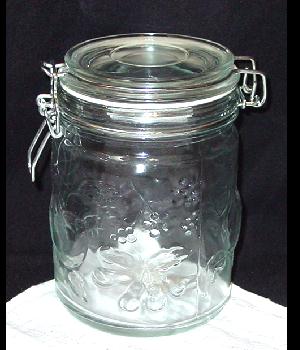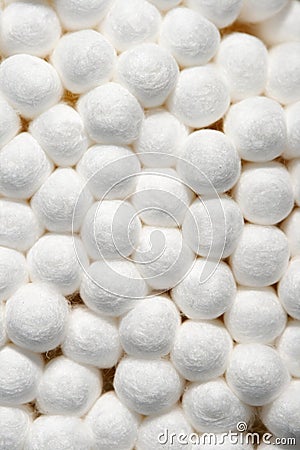Does curing affect potency?
Contributed by: Fergetit & Skunk Works
Submitted: October 31st, 2003
The very short answer is YES. It does affect potency in a very positive manner. Curing cannabis after harvesting for few days to several months will improve the potency, as well as the taste and texture of the buds.
Curing takes place after cannabis has been harvested, manicured and partially dried. Most cannabis will retain a significant quantity of moisture within its stems and inner buds even when the outside feels dry. This is especially true for very dense buds, more care must be taken in drying loose airy buds because sometimes they can dry too fast.
Should a sample of bud become over-dried before proper curing is complete, many different techniques may be used to slightly re-hydrate the bud and continue curing as normal. Fresh buds, orange or lemon peels, lettuce, apple or many other fresh fruits and vegetables can be added to a sealed jar of pot to allow more moisture to diffuse into it. Plain water either sprayed directly on or applied via towel to the buds is also a good way to re-moisten them.
Be very careful when re-moisturizing buds though, because sometimes the re-moisturizing material can carry pathogenic fungi and bacteria, Which if not monitored carefully, can destroy your crop. Venting, checking, turning, and even re-moistening of buds is necessary so that the proper moisture content to promote curing is present, slow even drying is the optimum process for curing cannabis.
The preferred container for curing and storage of cannabis buds is an all glass jar, with a large opening for easy access. Wide-mouth canning jars with glass bodies and tops with a rubber seal are an ideal choice. Less preferred are small-mouth canning jars with metal or plastic lids. Generally try to avoid all plastics in direct or close contact with your cannabis. Generally these materials are slightly porous and the phenolic acids and terpenoids can react with plastics, but not with glass.
Initially drying can be preformed free hanging or enclosed in cardboard boxes or paper bags, both of which will act as a desiccant.
There are several process and effects which take place during curing that can rationally and scientifically explain the increase in potency and improvement of the smoke in cured material:
Moisture Content
Moisture is essential for the curing process, it is both your friend and enemy. If too much moisture is left in the buds, with out the regular mixing, venting and turning of buds involved with curing, molds and bacteria can quickly form and ruin the taste and potency of your stash. On the other hand, without the necessary moisture metabolic processes essential to curing do not take place.
Fresh cannabis plants are around 80% water (all %ís by weight); curing generally begins after the cannabis has lost half of itís initial mass, and contains approximately 33% of itís initial water.
Once curing is complete and the pot is ìdryî, it should still contain 10-15% moisture, approximately 2-4% of itsí initial water. This is an ideal because most bacteria and molds can not grow below 15% water content, and below 10% cannabis buds tend to powder.
Cannabinoid Conversion
Naturally, as the metabolic processes continue during curing, the conversion of cannabergerol to tetrahydrocannabinol will continue and the potency of the pot will increase. This is because cannabergerol (CBG) is the non-psychoactive precursor for tetrahydrocannabinol (THC). Of course, the exact change in THC content will necessarily be dependant upon the concentration of CBG in the fresh material at harvest. Of course any remaining precursors necessary to form additional cannabidiol (CBD) and other cannabinoids will also be consumed and converted.
Be aware though if curing is excessively prolonged (most connoisseurs would agree after 6 months no more benefit could be had from curing), the conversion of THC to non-psychoactive cannabinol (CBN) will occur. The exact rate of decomposition can vary widely depending on handling and storage conditions, but can be less than 10% to greater than 40% decomposition per year.
Storage tips:
Potency during curing and storage can be maintained by observing some basic precautions:
The buds need to be kept in the dark, protected from light, which will quickly decompose the THC.
Moderated temperatures should be observed during curing, 50-75F being ideal.
Excessively hot temperatures will promote oxidation and the growth of mold and bacteria, and very cold temperatures can prolong curing and drying for up to several months.
During storage, buds should be stored as cold as possible, if temperatures of 0C or less are to be used, make sure the bud is dried to a very low moisture content before storage (to insure that cell walls are not burst by the freezing water).
Also, if prolonged storage is planned evacuating the oxygen and replacing it with carbon dioxide, nitrogen, argon, nitrous oxide, or any other inert gas will help slow oxidation, as well as the addition of antioxidants such as ascorbic acid packets or vitamin C tablets.
The most stable way to store cannabis is as whole unbroken buds or unpressed trichomes. Excessive rough handling or pressing can easily damage the protective cell walls and plant waxes that help protect cannabinoids from oxidation.
Continued Metabolism
Also as these metabolic process take place, the plant needs energy which leads it to consume the sugars, starches, nitrates, and minerals. Many of these compounds are metabolized and released as water and carbon dioxide, therefore removing what is essentially inert material from the pot increasing the concentration of cannabinoids therefore making it more potent.
Much of these positive metabolic processes can be most effectively begun with thourough flushing and stripping of the plant before harvest. This will help reduce the amount of time necessary for a good cure.
Curing will not only improve potency, but the color and look of most cannabis buds because as the chlorophyll is broken down purple, gold, and white coloration can emerge and the trichomes will appear more pronounced.
Decarboxylation
Some decarboxylization will take place during curing as well. This happens when the carboxyl group (COOH) located at C-2, C-4, or the end of the hydrocarbon chain at C-3 is destroyed leaving a hydrogen attached and liberating CO2.
Decarboxylization is necessary to convert cannabinoids to usable psychoactive forms; the plants (and your body) carboxylize cannabinoids to make them more soluble in water (for metabolic reactions and excretion).
Research indicates that this effect is fairly minimal during the curing process though. Decarboxylization will take place naturally very rapidly at temperatures of over 100C. So smoking and most any cooking will decarboxylize the cannabinoids. As decarboxylization occurs, the loss of CO2 will liberate a small amount of inert material making the pot more potent via concentration of the cannabinoids.
Taste & Odor
Terpenoids are the highly volatile compounds that give marijuana much of itsí characteristic odors, and therefore tastes.
The most current research also suggests terpenoids lend to the high, sometimes very significantly. Cannabinoids are phenolated terepenes so itís not surprising that many hundreds of different terpenoids are synthesized as well.
As pot ages, some of the terpenoids go through polycyclic aromatization in the process of decomposition. This agglomeration of terpenoids will change the flavor; hence the ability of cured pot to show flavors that didnít seem present in the original fresh material. Much of the very volatile terpenoids will also evaporate and or decompose, especially with prolonged curing or storage. This action will remove some matter from the pot increasing the cannabinoid concentration and therefore potency.
It must be noted that excessively long curing or storage, higher temperatures, or extremely low moisture content will cause such through evaporation of the terpenoids that the cannabis will generally loose almost all of itís natural flavors.






